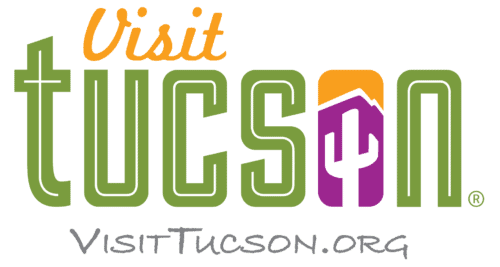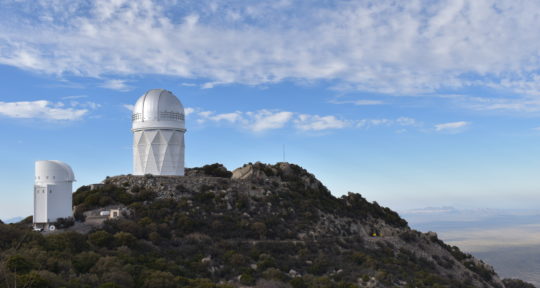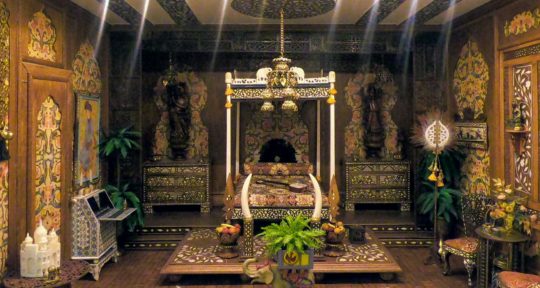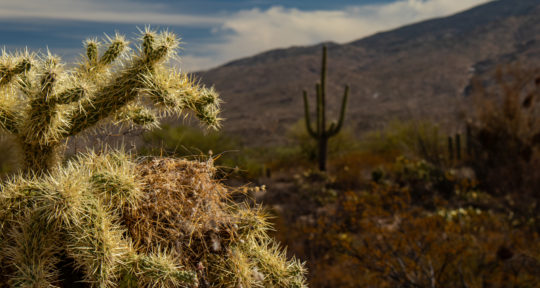The rattlesnake raises its head and stares menacingly at me. Its tongue flicks and tail twitches violently as it tries to find the perfect place to strike. Only inches away, I stand motionless. I feel completely captivated by the writhing reptile.
Lucky for me, we’re separated by a thick sheet of glass. But that doesn’t take away from the mesmerizing feeling I have—a feeling I will continue to have as I make my way around Tucson, Arizona. From scrap yard art to enchanting fantasy adventures to run-ins with local wildlife, my brief trip makes me realize that Arizona’s second largest city is anything but conventional.
Arizona-Sonora Desert Museum
While the Arizona-Sonora Desert Museum might technically be called a museum, that’s not an adequate descriptor. This 98-acre natural history museum is also a botanical garden, zoo, aquarium, and art gallery that embodies the term interactive learning.
I enter the museum and emerge onto a desert vista with sweeping views of the surrounding Saguaro National Park. After stepping onto one of the dirt paths (85 percent of the Desert Museum is outdoors), I set off through the juniper trees and cholla cactuses to the first exhibit.
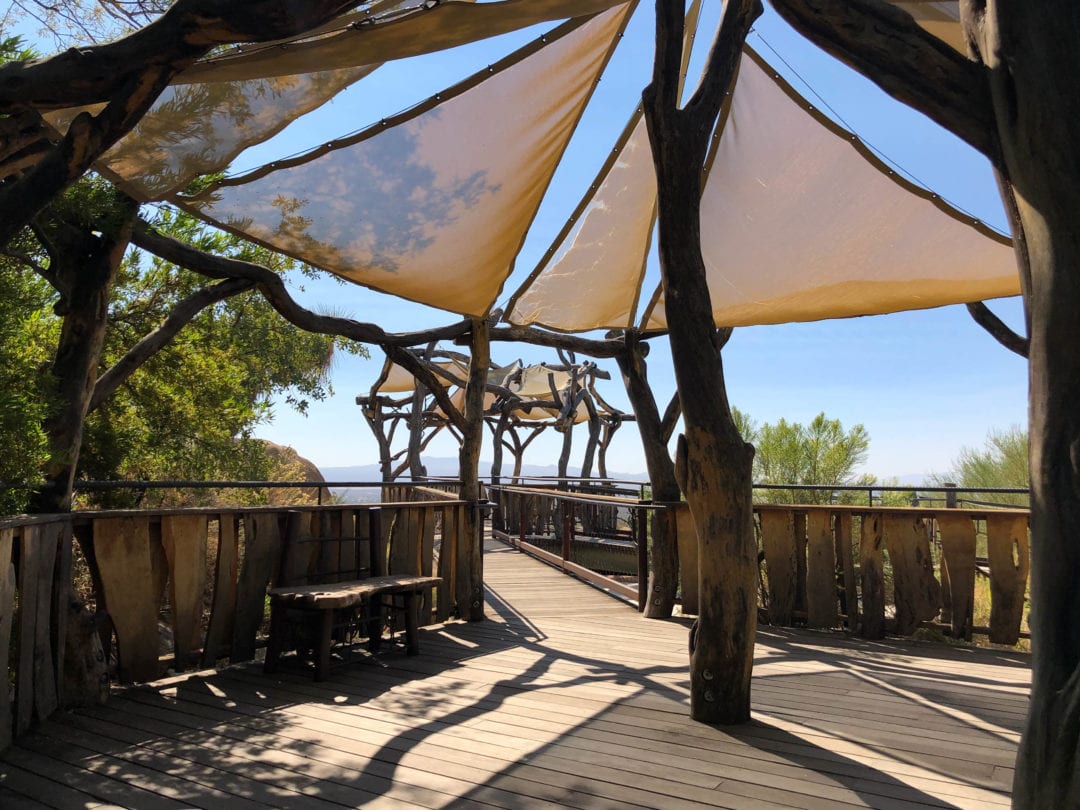
The museum exhibits are broken up into different ecological areas from the Sonoran Desert, including the Mountain Woodlands and Desert Grasslands. Collectively, the museum has more than 1,200 different types of plants and nearly 230 species of animals—including one very aggressive rattlesnake. After my standoff with the rattler, I move on to watch the resident black bear and some Mexican wolves lazily lounge around in the shade. I, too, decide to take a break from the sun and make my way to the indoor aquarium, where I find an impressive collection of fresh and saltwater fish species that call the Colorado River home.
I pass through the hummingbird aviary, the Cat Canyon exhibit, and stop at the stingray exhibit (yes, there are stingrays in Arizona). Here I learn that these particular stingrays hail from the Sea of Cortez—a body of water that shares a border with the Sonoran Desert.
The museum teaches conservation and tries to inspire both understanding and appreciation for the unique desert landscape that occupies so much of southern Arizona.
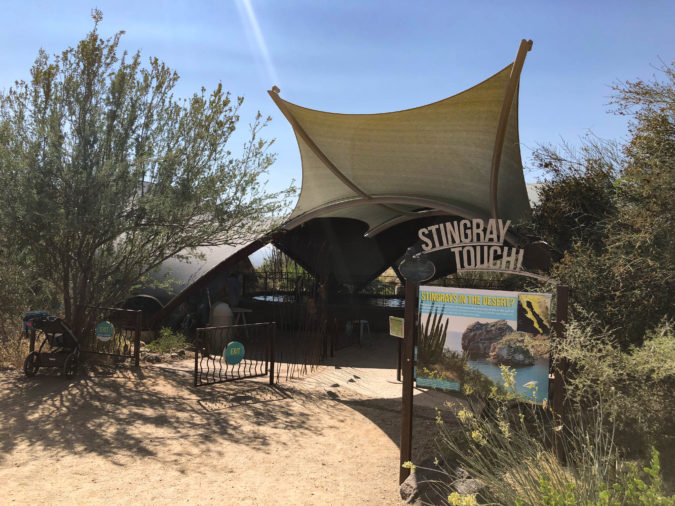
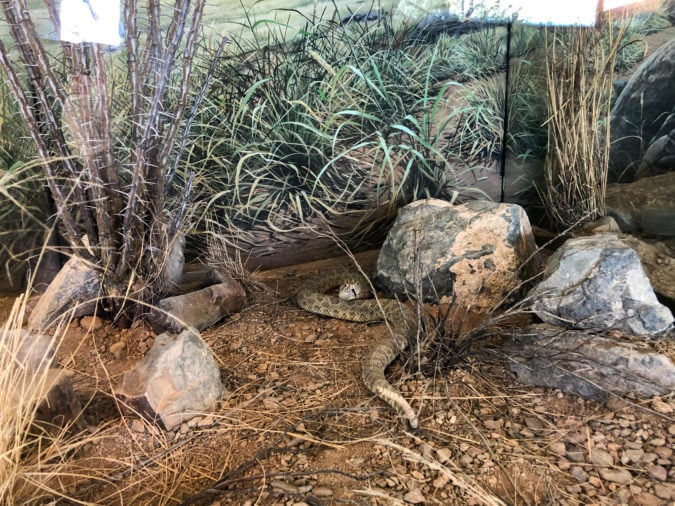
Casa Goofy International
My next stop is across town near the Santa Cruz River. Located in a residential neighborhood, Casa Goofy International is an unconventional home that mixes urban gardening, scrap yard art, and debris. Dennis Williams—a former clown who is often seen driving around town in a large yellow van painted like a banana spaceship—owns Casa Goofy and is kind enough to give me a tour of his eclectic property. As he unlocks the gate, he points out a few of his favorite sculptures, including a giant windmill piece that he’s currently working on to harness wind power.
Walking on a footpath that snakes between the piles of debris and the occasional bunkhouses for WOOFers (participants of Worldwide Opportunities on Organic Farms), Williams takes me to the back of his property. As we walk, he points out all of the different things he’s building to try and increase sustainable urban gardening in the city.
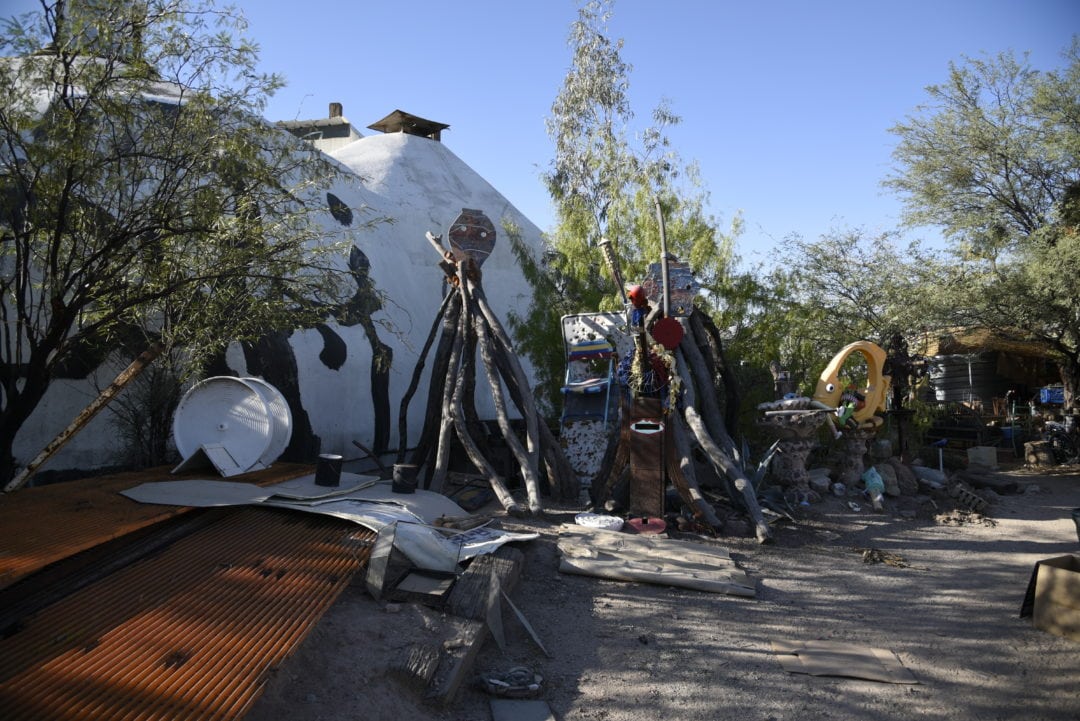
Once we reach the back of the property, I’m greeted by several goats, chickens, and ducks. Williams hands me some feed, and one particularly large horned goat shoves his way through the pack to get the first taste. He deftly chomps the feed in my hand before giving me a beady side eye, clearly looking for more.
But Williams’ place isn’t just home to art and farm animals. Much of what Williams does at Casa Goofy International is also tied to a local daycare for low income households. He has turned his property into a testing ground for urban gardening practices that the city can then implement to help teach kids about gardening and caring for plants.
Wandering past the plants and various contraptions in William’s yard makes me consider picking up gardening as a hobby. Even if I never plant a full garden, I leave Casa Goofy feeling compelled to reuse something that I might have otherwise thrown out.
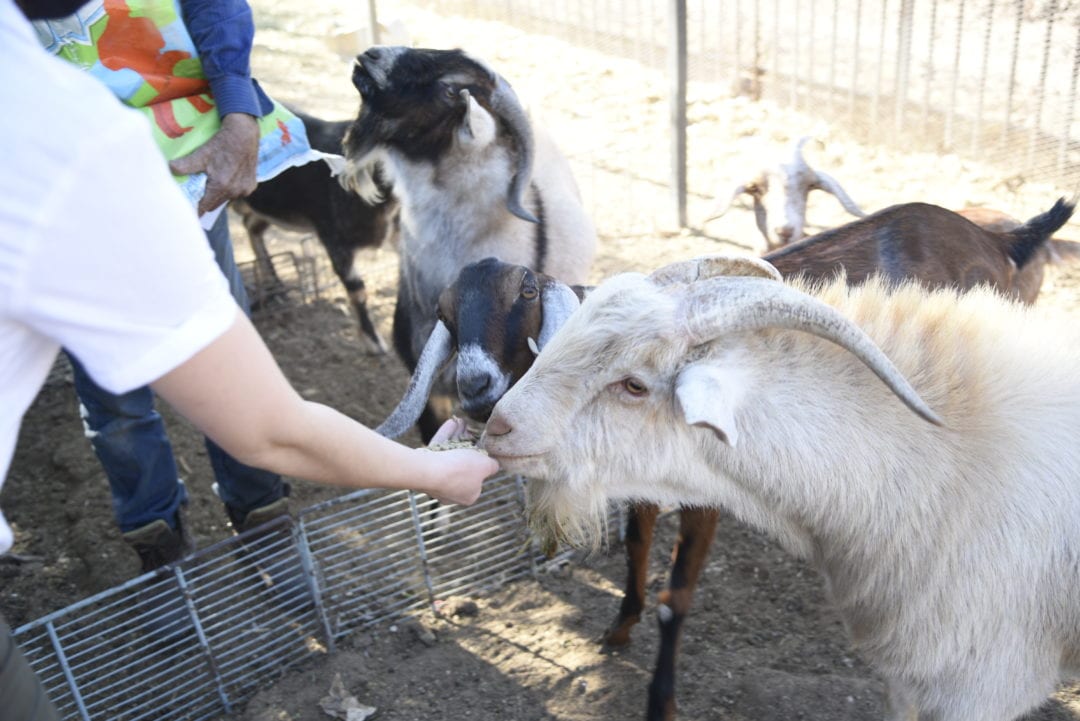
Valley of the Moon
As my day in Tucson comes to a close, I head to my final stop. With an air of mystery, a volunteer at the entrance of Valley of the Moon hands me a scroll and a small, round “kindness stone.” Unfurling the scroll reveals a map of the property and hints at adventure in places called the Witch’s Cauldron, the Castle, and the Rabbit Hole.
Valley of the Moon is a nonprofit started in 1923 by George Phar Legler, who believed that kindness to everyone is the key to happiness. Almost 100 years later, kindness is still the guiding star of the charity.
Throughout the year, Valley of the Moon puts on different events; tonight, I’m attending the Moonlight Walkabout, where guests are encouraged to explore the park during the twilight hours. Clutching my map and kindness stone, I stroll through the moonlit property and am immediately caught up in the magic.
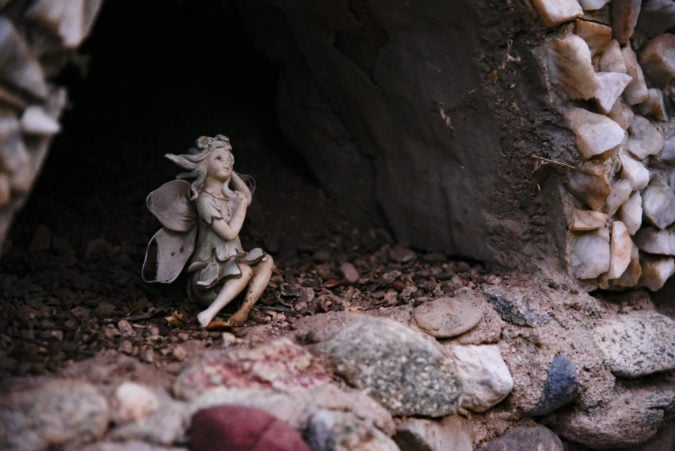

I examine the Enchanted Garden—a hidden grotto with tiny fairy homes and pools of water—the little details of which seem to have been inspired by pure imagination. Jenni Sunshine, the president of Valley of the Moon, advises me to crouch down. I follow her advice and discover another world entirely—one filled with hidden tea parties, crystals, and other trinkets. Sunshine says that Valley of the Moon tries to hide things throughout the park that only a child might uncover.
She also tells me about the Wizard’s Tower, an original structure from the 1920s that is used as a stage for children’s theater productions. Valley of the Moon regularly offers open casting calls to local kids, including those with limited financial resources or developmental issues, who want to get involved in the theatre. They make a point to create roles for everyone and specialize in plays that feature good prevailing over evil.
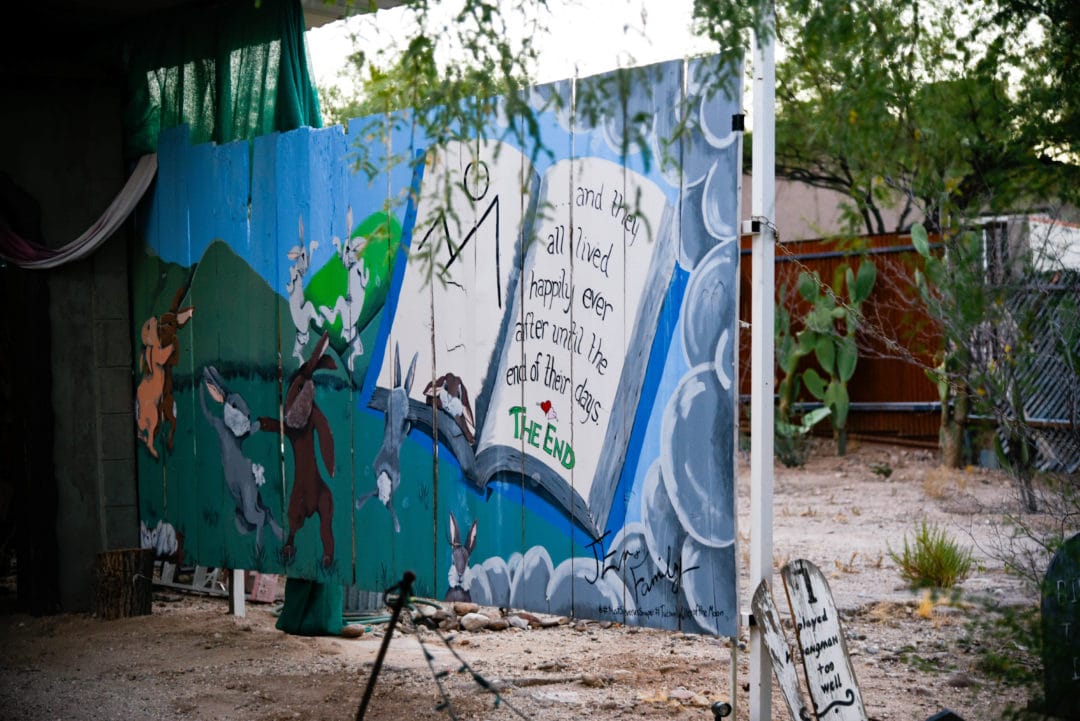
The care that goes into providing a kind and inclusive experience for all guests is evident in every detail. From the enthusiastic volunteers to the park itself—which is run on donations and the occasional grant—everyone involved is deeply committed to providing a kind experience. At Valley of the Moon, kids of all ages are encouraged to be themselves, leave their troubles at the gate, and exercise their imagination. Feeling like a big kid myself, I leave the park grinning and thinking about the magic of human kindness.
From learning about urban gardening and the diversity of the Sonoran landscape to being reminded of how far a little bit of kindness can go, these unique experiences offered me a different perspective on Tucson. I’ve lived in Arizona for years, but just one weekend exploring the city made me realize how many extraordinary places you can find when you’re open to the unconventional.
Take this trip
To explore all the places mentioned above, check out the trip below.
